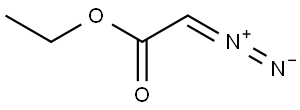
Trimethyloxonium Tetrafluoroborate synthesis
- Product Name:Trimethyloxonium Tetrafluoroborate
- CAS Number:420-37-1
- Molecular formula:C3H9BF4O
- Molecular Weight:147.91

115-10-6

109-63-7

420-37-1
The general procedure for the preparation of trimethoxonium tetrafluoroborate is as follows (adapted with minor modifications from TJ. Curphey, Org. Synth., Coll. vol. 6, p. 1019 (1988)): 1. add 80 mL of dichloromethane (DCM) to a 500 mL three-necked round-bottomed flask (equipped with an N2 inlet, 60 mL pressure-equalizing dropping funnel, magnetic stirring bar, and rubber septum, and marked at approximately 190 mL) that has been pre-dried in an oven, under the protection of dry nitrogen gas. 2. 33.3 mL (270 mmol) of boron trifluoride ether compound was added, followed by cooling the mixture in a dry ice-acetone bath. 3. condense the DME into the DCM solution through a needle inserted through the rubber septum, which should remain just below the liquid level until the total volume of liquid reaches the 190mL mark. 4. add 24.1mL (307mmol) of epichlorohydrin dropwise over approximately 15 minutes with vigorous stirring (note: the mixture will become very viscous and may need to be rotated manually to ensure adequate stirring). 5. Remove the cooling bath and continue to vigorously stir the mixture overnight at room temperature. 6. Upon completion of the reaction, the resulting solid product was collected by filtration through a medium glass-filled Brinell's funnel, which had been pre oven-dried, under a stream of N2 gas. 7. The flask and filter were rinsed with dichloromethane (2 x 100mL) to remove the solids. 8. After drying under nitrogen protection, 29.4 g (98% yield) of free flowing white solid trimethoxonium tetrafluoroborate was obtained. 9. Store the product in a pre-oven dried glass vial in a nitrogen protected refrigerator.

115-10-6
106 suppliers
$75.00/25g

109-63-7
405 suppliers
$10.60/1gm:

420-37-1
246 suppliers
$17.00/5g
Yield:420-37-1 98%
Reaction Conditions:
with epichlorohydrin in dichloromethane;Cooling with acetone-dry ice;Inert atmosphere;
Steps:
Preparation of trimethyloxonium tetrafluoroborate (adapted from TJ. Curphey, Org. Synth., Coll. Vol. 6, p.1019 (1988) with slight modification as follows): [00143] An oven-dried 500 mL 3 -neck round-bottomed flask (marked with a line marked at about 190 mL), equipped with a N2 inlet, 60 mL pressure- equalized dropping funnel, magnetic stirrer bar and rubber septum was placed under a blanket of dry nitrogen gas. DCM (80 mL) was added, followed by boron trifluoride diethyl etherate (33.3 mL, 270 mmol) and the mixture was cooled in a dry ice-acetone bath. Dimethyl ether was condensed into the DCM solution via a needle (through the rubber septum) that remained just below the surface until the total volume of the liquid reached the 190 mL mark. The mixture was stirred vigorously while epichlorohydrin (24.1 mL, 307 mmol) was added drop wise over approximately 15 minutes (the mixture became very thick and required occasion manual swirling to ensure good stirring). The bath was removed and the mixture was stirred vigorously overnight. The resulting solid was collected by filtration through an oven dried, medium frit glass Buchner funnel under a stream of N2 and the flask and filter were rinsed with DCM (2x100 mL). The trimethyloxonium tetrafluoroborate product was isolated as a free-flowing white solid (29.4 g, 98%) after drying under nitrogen and was stored under nitrogen in an oven-dried glass bottle in a freezer.
References:
WO2010/68520,2010,A2 Location in patent:Page/Page column 28-29

115-10-6
106 suppliers
$75.00/25g

420-37-1
246 suppliers
$17.00/5g

623-73-4
149 suppliers
$27.30/25ML

115-10-6
106 suppliers
$75.00/25g

420-37-1
246 suppliers
$17.00/5g

115-10-6
106 suppliers
$75.00/25g

368-39-8
260 suppliers
$36.53/25ml

420-37-1
246 suppliers
$17.00/5g

